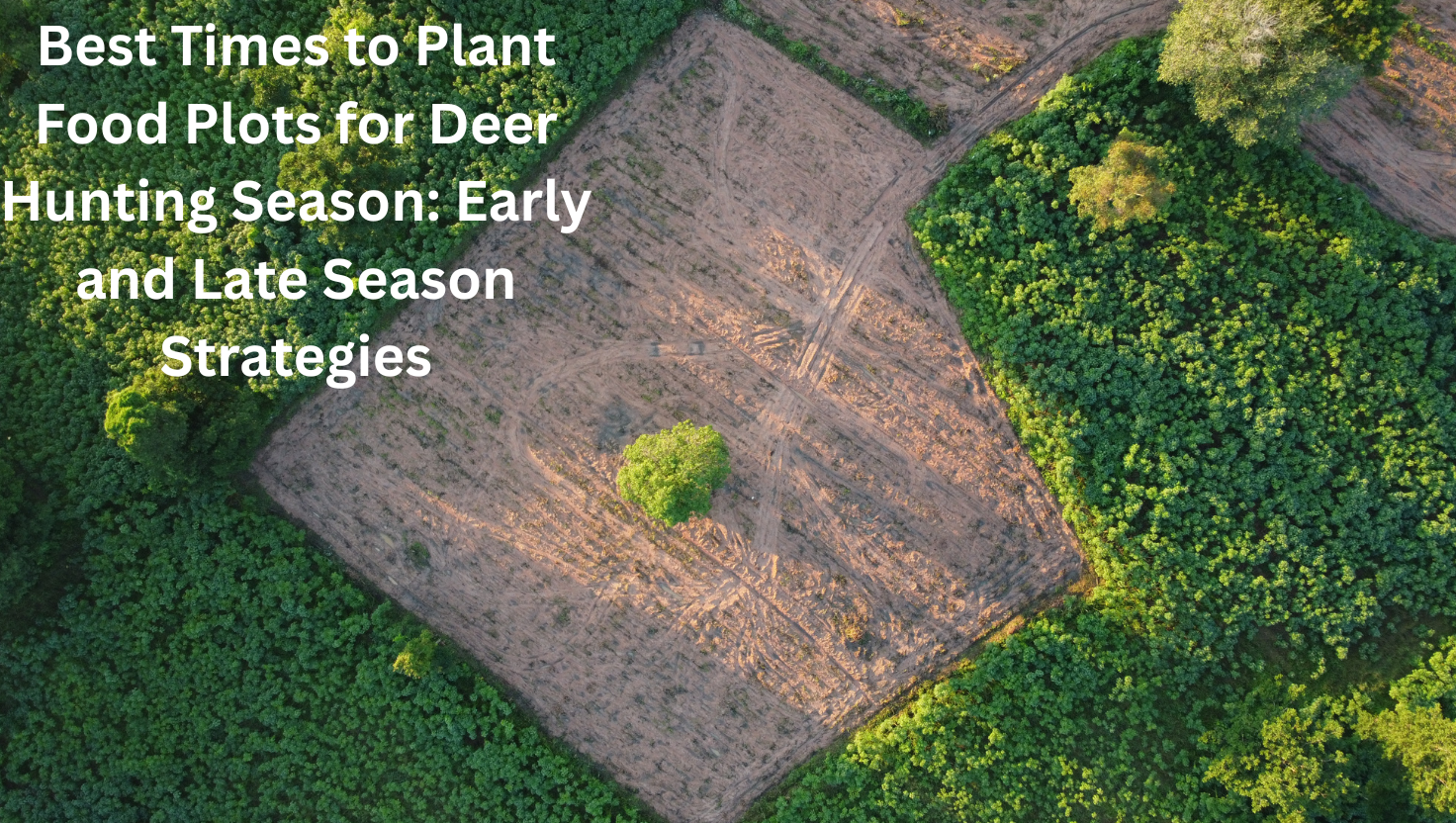Best Times to Plant Food Plots for Deer Hunting Season: Early and Late Season Strategies

If you're serious about deer hunting, planting food plots at the right time can be the difference between a successful season and an empty freezer. With August around the corner, we’re entering a pivotal moment in the annual food plot calendar. Whether you're preparing for early season bowhunting or laying the groundwork for a strong late-season pull, timing and strategy are everything.
Why Timing Matters for Food Plots
Deer are creatures of habit, and their patterns revolve around three things: food, water, and safety. A well-timed food plot does more than feed deer—it draws them in, keeps them around, and sets you up for perfect stand locations when the season opens. The catch? Different times of year call for different plantings and approaches.
Mid-July to August: Your Next Steps Right Now
This is prime time for fall food plot prep. Here’s what to do now:
1. Soil Prep and Testing
- If you haven’t tested your soil this year, do it now. A simple soil test will tell you your pH and nutrient levels so you can lime and fertilize correctly.
- Mow or spray existing vegetation, till or disc the soil, and let it sit for a few days before planting.
2. Early Fall Annuals (Cool-Season Crops)
Now through early September is your window for planting fast-growing, cool-season annuals like:
- Brassicas (turnips, radishes, rape): Need 45–60 days of growth before frost for best results.
- Cereal grains (oats, rye, winter wheat): These germinate quickly and offer a strong food source through early and late seasons.
3. Blend for Attraction and Nutrition
Use a mix that includes clover (for longevity), radish or turnip (for root mass and attraction), and cereal grains. Deer love variety—and so do your soil microbes.
Early Season Strategy: September through October
The early bow season is all about patterns. Deer are predictable and less pressured.
What to Plant for Early Season Draw
- Clover and chicory plots planted earlier in spring or late summer are lush now and perfect for staging areas near bedding.
- Cereal grains are starting to green up, and bucks in bachelor groups will hit these plots before they shift to fall behavior.
Hunting Tips
- Set stands on the downwind edge of food plots.
- Focus on evening hunts as deer filter out to feed.
Late Season Strategy: November through January
This is when food scarcity sets in and well-planned plots really shine.
Key Plant Types
- Brassicas get sweeter after the first frost due to starch-to-sugar conversion—ideal for late-season energy.
- Standing corn or beans are gold mines if you can dedicate the space and budget.
Plot Maintenance Tips
- Avoid overhunting; let deer feel safe.
- Supplement with mineral sites or nearby bedding cover if possible.
Pro Tips for Plot Success
- Plant based on your region’s frost dates. The further north you are, the earlier you’ll need to plant.
- Don’t over-seed. Too much seed = weak plants.
- Keep a log. Note when you planted, what you used, how it grew, and deer activity.
Final Thoughts
The best time to plant your food plot is based on when you want it to peak. Right now—in late July into August—you’re in the ideal window to plant fall annuals that will pull deer during early and late seasons alike. Prepare your soil, plan your blend, and think like a deer.
Remember: a food plot isn’t just about planting. It’s about plotting—strategy, timing, and understanding the deer on your land. Done right, your plots will keep the bucks coming back all season long.

